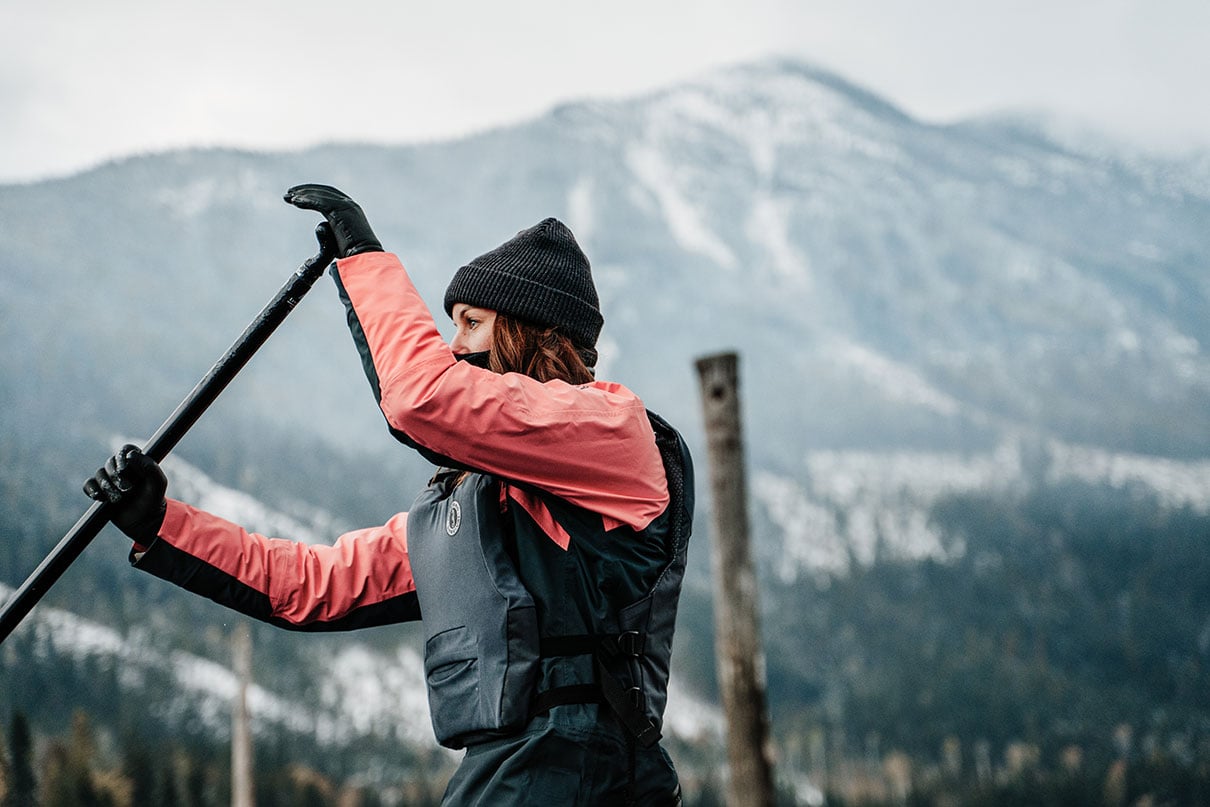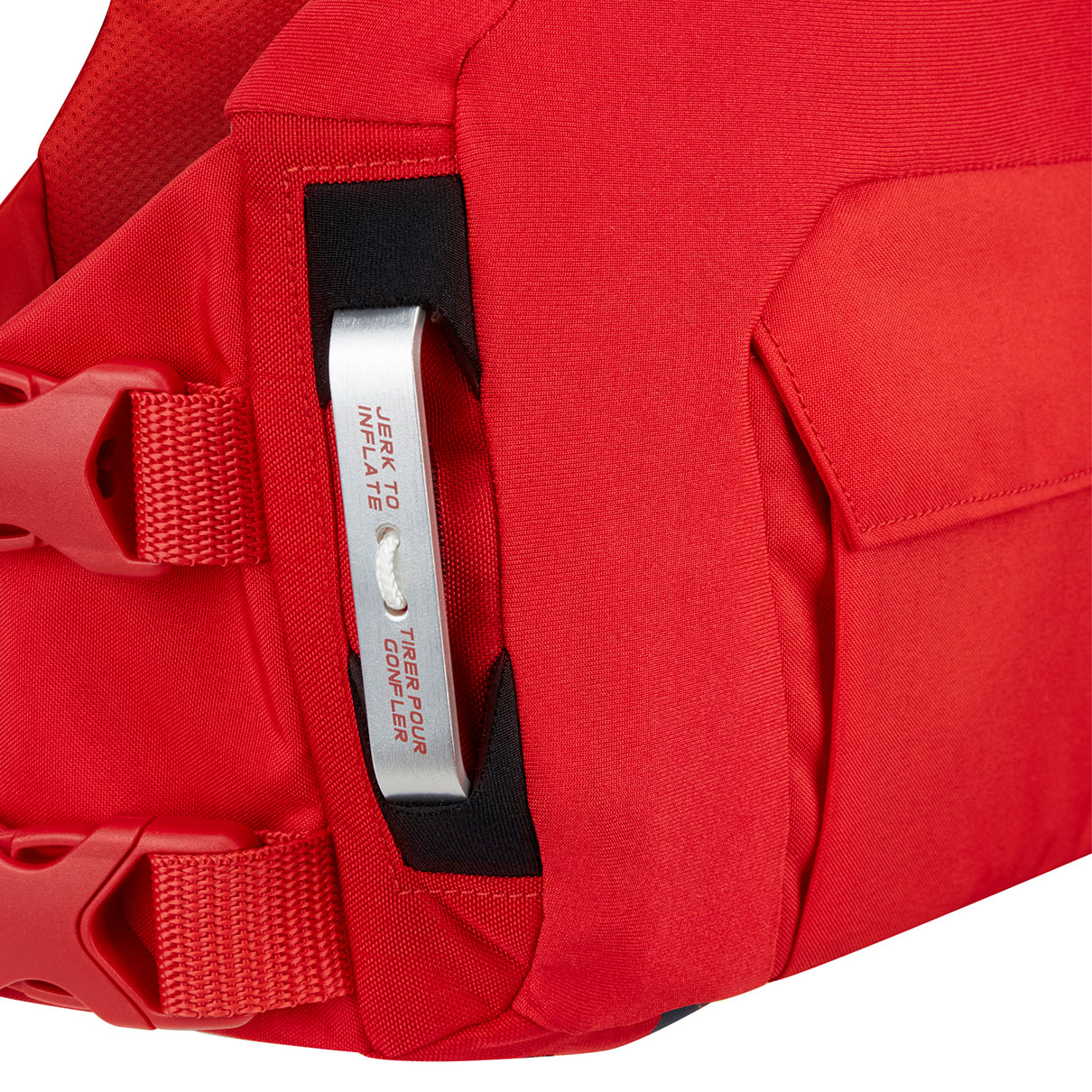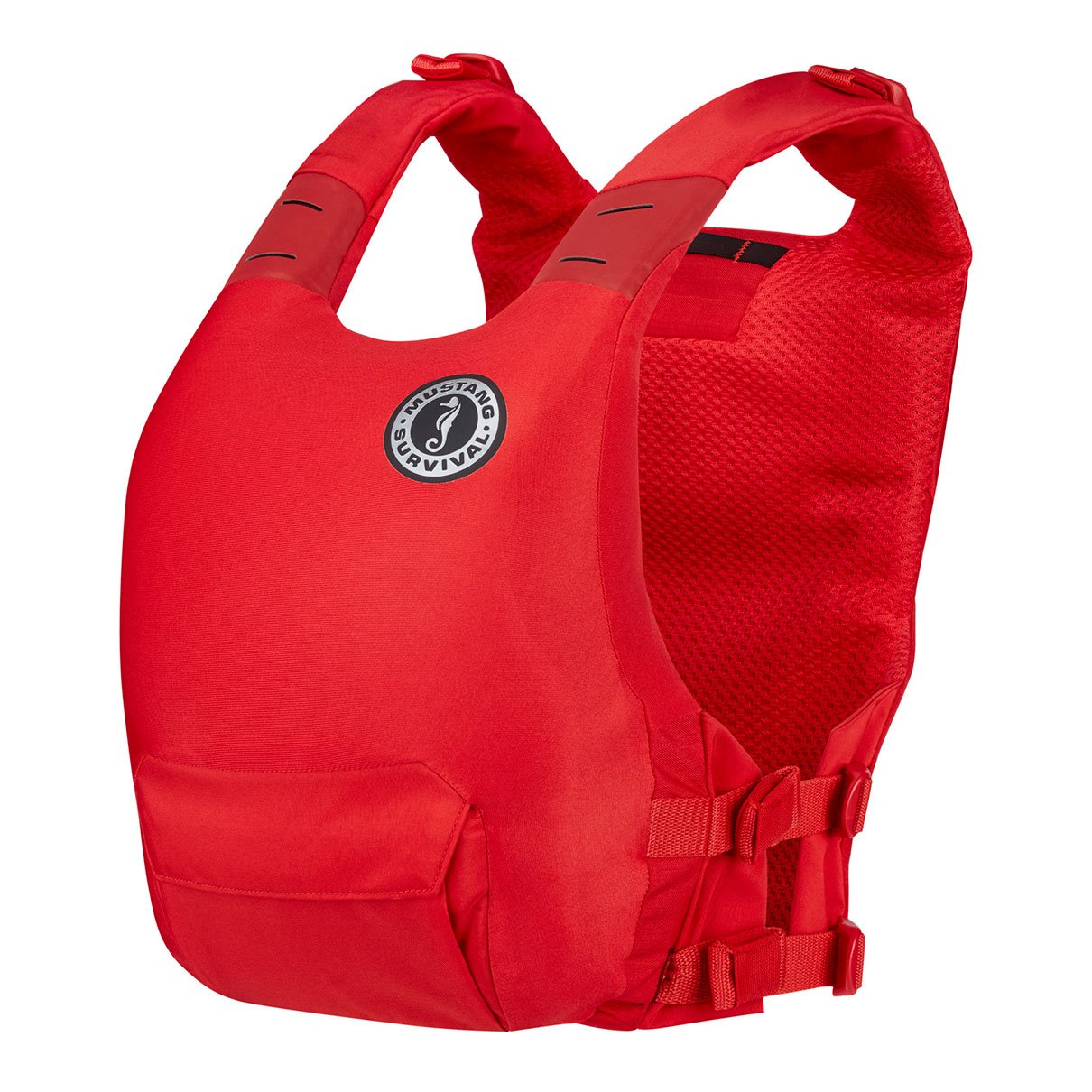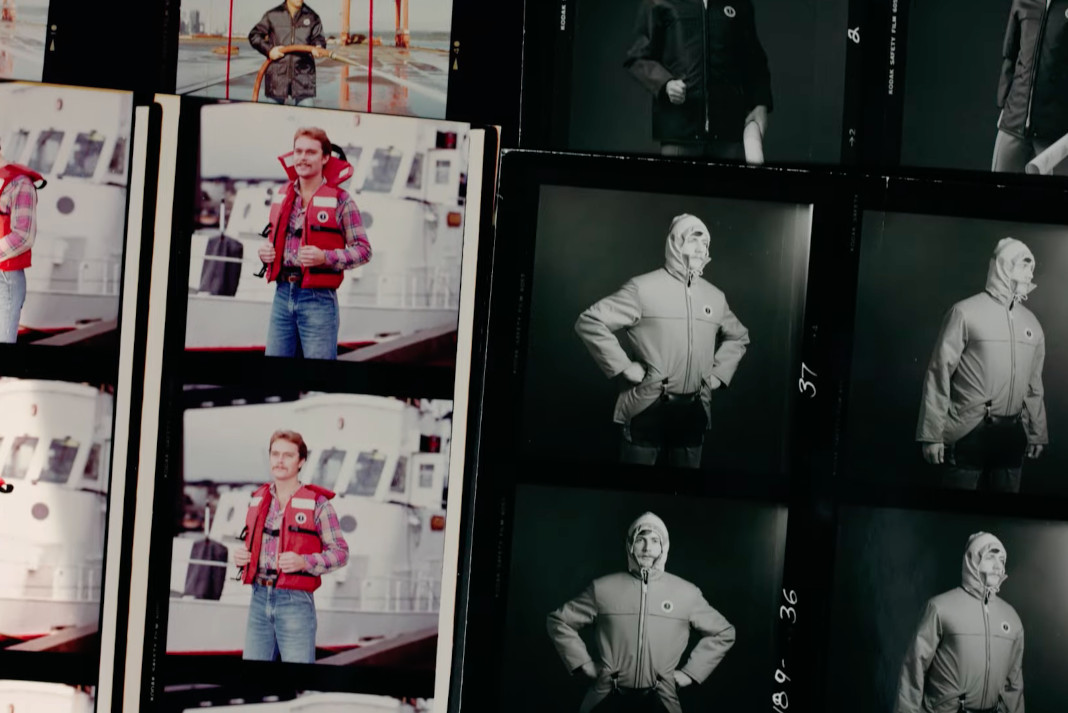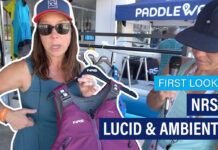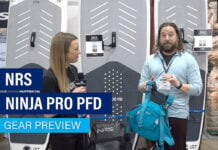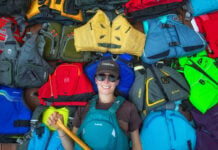For decades, Mustang Survival was the brand of life jacket you’d expect to find hanging in the boathouse at the cottage, stowed on a commercial fishing vessel, or aboard a Coast Guard icebreaker. The company’s life jackets and insulated floater coats were utilitarian, without the flash and features of other brands.
With a lineage stretching back over 50 years, it’s no surprise the familiar seahorse logo was most often associated with “frumpy, orange and safe,” a historical description acknowledged by Tyler Bazant, the company’s product designer for professional, defense and aerospace.

Yet, despite being designed for first responders, Mustang’s technology has been steadily making its way into the hands of everyday paddlers. As the company expands its offerings beyond commercial use, paddlers are appreciating the advanced safety features and innovation packed into Mustang’s gear, including unique life jackets such as the Khimera, a dual-flotation PFD combining foam and inflatable technology. First released in 2019, the Khimera evolved from the specialized demands of rescue swimmers seeking a vest that maximized mobility but didn’t skimp on floatation when needed. In short, it captured the same sweet spot demanded by standup paddleboarders and sea kayakers. The latter adoption marked a turning point for Mustang Survival.
“We woke up and realized we were a brand, not an engineering, design and manufacturing company,” says Bazant, who has worked with Mustang for over 20 years. “We realized we had this legacy lineage—this journey—and we’ve been leaning into it the last five years. Part of that has been focusing more on water sports. The Khimera is a product that’s born from that refocus.”
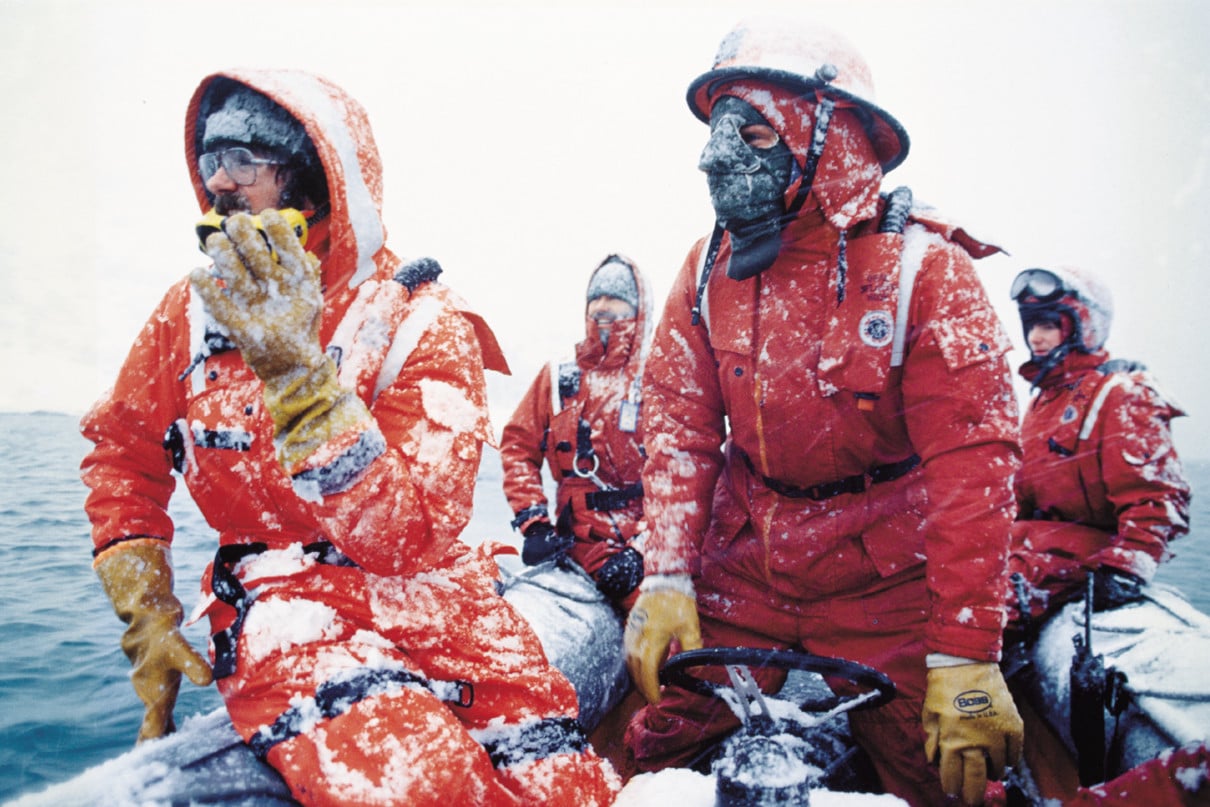
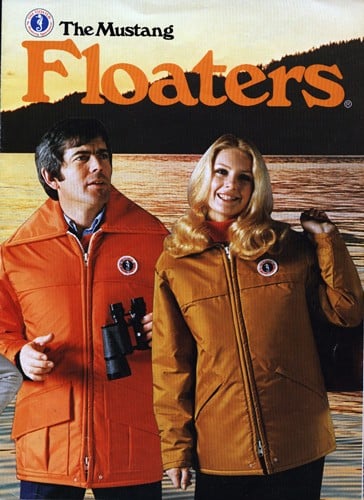
A life jacket company emerges out of spite
Mustang Survival was created “almost out of spite,” says Bazant. In the late 1960s, founder Irv Davies manufactured down jackets from a facility on Water Street in Vancouver, BC. He experimented with foam to cut the cost of down insulation. According to Bazant, the vendor selling him the foam said if you fell in the water wearing one of Davies’ jackets you’d float. The tease was a lightbulb moment for Davies. And so, the Mustang Floatjacket—a hybrid life jacket and insulated parka that’s standard issue for anyone working around icy water, from commercial fishermen on subarctic waters to oil rig workers, was born. “They still call them ‘Mustangs’ in the [Canadian] Coast Guard,” says Bazant, “and we still make them.”
Davies’ invention came about around the same time floatation devices were becoming standard for all boaters. Historically, “life was cheap,” wrote C.J. Brooks, a Navy captain and physician in the Canadian Forces who passed recently in October of 2024. “The drowning of a sailor or a fisherman was considered an occupational hazard.”
Upwards of 40,000 officers and passengers on Royal Navy vessels lost their lives in World War II because a personal issue life jacket did not exist, Brooks writes. It wasn’t until the 1960s that the U.S. Coast Guard started emphasizing the strong correlation between drowning deaths and lack of life jackets. Movement by the Coast Guard in the 1960s and ‘70s to legislate life jackets—and distinguish between life jackets (vests with a self-righting capacity) and more streamlined yet buoyant PFDs—kickstarted a global trend. Mustang Survival came along at the right moment.
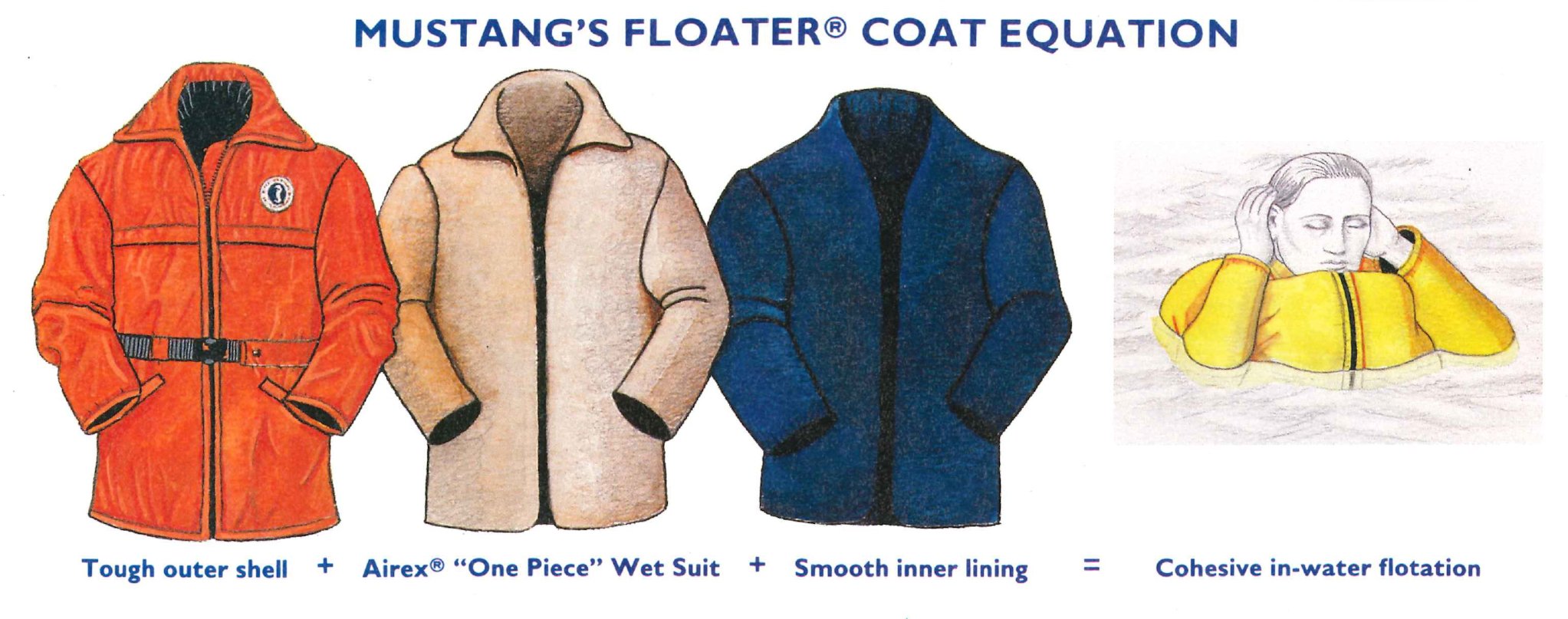
Finding the path to paddlers
Mustang’s roots are written into Bazant’s job title—professional, defense and aerospace. From its inception, the brand made a name for itself amongst professionals working in high-risk aquatic environments, including the Canadian and U.S. Coast Guard and military, law enforcement, Navy SEALS, and NASA. Research and development, including multiple iterations of prototypes, were par for the course. With so much testing and refinement, final products were rightfully recognized as gold standards of innovation. It was a tidy (and no doubt lucrative) space to occupy. But aside from clunky life jackets and drab PFDs that still turn up in cottage country, Bazant says Mustang missed out on key segments of recreational users—namely, paddlers.
“The nerd side of the business is very deep and long,” he laughs.
The tide began to change with the advent of inflatable life jackets. In the 1990s, Billabong, a popular surfing brand, commissioned Mustang to create streamlined, inflatable floatation bladders to help Hawaiian big wave surfer Shane Dorian survive epic wipeouts. Mustang engineers became recognized for their precise and durable radio-frequency welded seams. That was nearly three decades ago, about the same time the company created one of the first inflatable waist belts for paddlesports, which was met with mixed reception.
“Paddlesports retailers looked at it, and they said, ‘What do we do with this?’” recalls Bazant. However, this “horrible bomb in the recreational sector” was embraced by the U.S. Navy, Bazant adds. “They asked us to add attachment points for a light and sea dye and made it the standard abandoned vessel pouch on every boat in the fleet.”
Fast-forward to the 2010s, and Mustang’s waist belt inflatable became popular with the expanding number of standup paddleboarders. Currently, the brand manufactures a pair of waist belt inflatables, including the tiny Minimalist and compact Essentialist belt packs, both of which provide up to 16.9 pounds of buoyancy and are approved by the U.S. Coast Guard and Transport Canada.

The Khimera ushers in the hybrid inflatable evolution
Despite their compact size and proven performance, inflatables can be a stretch for paddlers more familiar with foam PFDs. Enter the slim-fitting, PFD-shaped dual-floatation Khimera. Like most Mustang products, it has professional origins, starting as a rescue swimmer vest for first responders in helicopter rescues.
“They need to wear life jackets but don’t want it to be bulky because it’s hard to see when they’re going down the wire,” explains Dave Abt, the head of Mustang’s public safety and industrial business department. “The solution was to create a vest [known as the MRV170] that doesn’t restrict movement and provides additional floatation when it’s really needed. It was and still is the only vest in the market of its kind.”
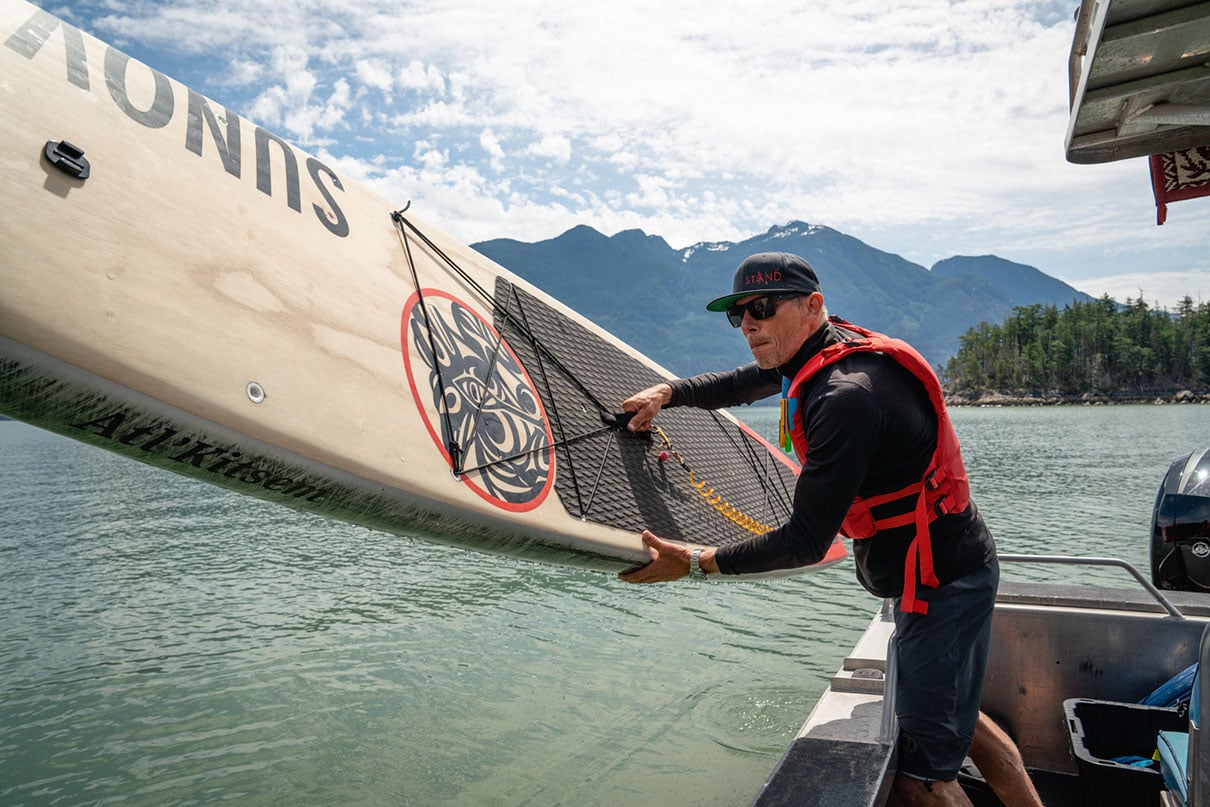
For the Khimera, “The technology stayed the same with small changes and some features removed for the rec market,” notes Abt. Mustang scaled back the flotation to 7.5 pounds of foam and 13 pounds of manually deployed inflation, which was plenty to achieve U.S. Coast Guard and Transport Canada certification.
Canadian expedition paddlers Norm Hann and Bruce Kirkby chose Khimeras for their daunting 50-kilometer crossing of the Hecate Strait, from British Columbia’s northern coast to Haida Gwaii, in June 2023. “We’re huge fans,” says Kirkby. “It’s a lightweight, dual-flotation PFD that we’ve used on expeditions, training and travel. The Khimera weighs almost nothing, which means no additional strain on the back, especially during long days. The dual floatation offers serious protection in all sea conditions.” The Khimera was also selected as one of the best life jackets for paddleboarders by Paddling Mag editors.
As much as Bazant hopes Mustang makes big strides in the paddlesports sector, he’s certain it won’t be at the expense of the brand’s emphasis on safety and innovation. He looks forward to more game-changing products like the Khimera, which bridge the gap between professional and recreational users, and employ high-tech and dependable air bladders to make safety as streamlined and comfortable as possible. “We’ve never been the cool brand,” he says. “We’re the reliable brand.”
“When the chips are down, pros come to us to use our equipment,” Bazant continues. “When you work in this space, it quickly becomes apparent performance is all that matters. You either deliver, or you don’t.”
Type 2 fun immersion. | Feature photo: Mustang Survival


